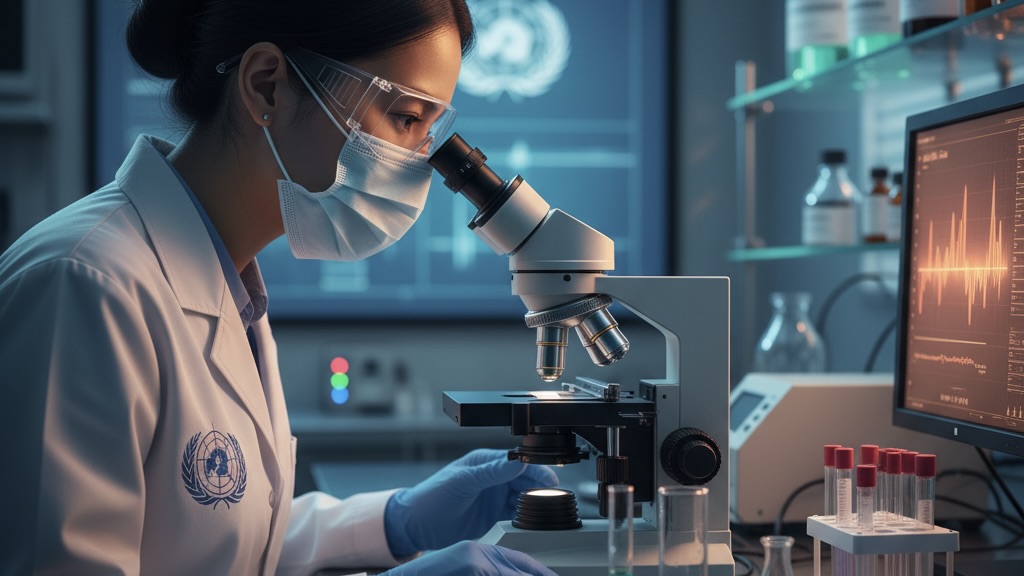Antimicrobial resistance Is now a major threat to the global health system. The World Health Organization (WHO) reports that one in six laboratory-confirmed bacterial infections has been resistant to antibiotic treatment. This condition marks a critical point in the war against bacterial infections that have long been easy to treat.
The WHO report highlights that the highest resistance is found in the Southeast Asia region and the Eastern Mediterranean. Both regions have experienced a sharp rise in infection cases that are no longer responsive to standard antibiotics, showing weak surveillance of antibiotic use and a health system that is not yet adequate in infection control.
Global Threat to the Health System
Antimicrobial resistance is not only a medical issue, but also a global crisis that has the potential to cripple the progress of modern medicine. The WHO states that the impact of this trend could destroy the success of various important medical procedures such as surgery, chemotherapy, and organ transplantation.
Infections that were previously considered mild can now be deadly because treatment options are increasingly limited. Doctors in various countries are reporting an increasing number of cases of patients who do not respond to first- or second-line antibiotics, forcing the use of newer-generation antibiotics that are more expensive and carry a higher risk of side effects.
Increase in cases in Southeast Asia and the Eastern Mediterranean.
The Southeast Asia region and the Eastern Mediterranean have become the focus of WHO's attention because these two regions have recorded the highest levels of antimicrobial resistance. Many developing countries in this region face problems in monitoring the distribution of medicines, a lack of laboratory facilities for microbiological diagnosis, and the use of antibiotics without a doctor's prescription.
In addition, there are still many agricultural and livestock farming practices that use antibiotics excessively to speed up the growth of livestock. The use of antibiotics beyond human medical necessity also accelerates the development of bacterial resistance in the environment, which ultimately affects humans through the food chain.
Poor patterns of antibiotic use.
Antimicrobial resistance is also exacerbated by inappropriate patterns of antibiotic consumption. Many patients stop treatment prematurely because they feel cured, whereas the bacteria have not fully disappeared. As a result, the surviving bacteria evolved to become stronger and resistant to similar treatments in the future.
WHO emphasizes the importance of public education regarding the prudent use of antibiotics. A global campaign that emphasizes the importance of completing the full course of antibiotics and not using them without a doctor's prescription must continue to be expanded.
Impact on Modern Medical Procedures
Medical procedures such as major surgeries, cancer treatment, and organ transplantation rely heavily on effective antibiotics to prevent postoperative infections. However, as resistance increases, the risk of infection-related complications increases dramatically. In the worst-case scenario, some elective surgeries can be postponed or even prohibited due to the infection risk that cannot be controlled.
This shows that antimicrobial resistance is not only a problem for individual patients, but also threatens the foundations of the entire health care system.
Global efforts to tackle antimicrobial resistance
To fight this threat, the WHO is calling for coordinated global action. Countries are encouraged to strengthen resistance surveillance systems, increase research and development of new antibiotics, and enforce strict regulations related to the distribution of medicines.
In addition, health systems in every country need to strengthen hospital infection control programs, improve the cleanliness of medical facilities, and expand vaccination programs that can prevent certain bacterial infections.
The Importance of Research and Innovation for New Antibiotics
WHO highlights that research into new antibiotics is urgently needed. In the last two decades, only a few new antibiotics have been approved globally, while bacteria continue to evolve. The medical world is now seeking alternative solutions such as phage therapy, bacterial vaccines, as well as the use of artificial intelligence to discover new antibacterial compounds that are more effective.
In addition to pharmaceutical research, cross-sector collaboration is also needed. The world of industry, academia, and government must work together to create a research ecosystem that supports the discovery of new antibiotics.
Reform of Antibiotic Use in the Community
At the community level, reform of antibiotic consumption patterns must begin with primary health care services. Doctors and pharmacists have a great responsibility to educate patients, ensure prescriptions are only issued when truly necessary, and transparently record data on antibiotic use for research purposes.
Public involvement is also important. The public must understand that antibiotics are not a universal medicine and should not be used for flu, cough, or other viral diseases. Community-based education and digital media can help raise awareness of the dangers of antimicrobial resistance.
Alarming Economic and Social Impacts
Antimicrobial resistance also has a significant economic impact. The cost of treatment has risen sharply because patients require longer treatment and more expensive medications. WHO estimates that, if not controlled, antimicrobial resistance could cause global economic losses of up to trillions of dollars each year.
In addition to health costs, labor productivity also declines due to rising rates of mortality and disability caused by infections that cannot be cured. Low-income countries are the most vulnerable to these impacts.
Regional efforts in Southeast Asia
Several countries in Southeast Asia have begun to take concrete steps. Indonesia, for example, strengthens policies for the rational use of antibiotics in hospitals through the 'Antimicrobial Stewardship' program. Meanwhile, Thailand is developing a digital monitoring system to track patterns of bacterial resistance in real time.
Cross-border collaboration in this region is increasingly important given that the spread of antibiotic-resistant bacteria does not recognize geographic boundaries. WHO supports the establishment of a regional coordination center to share data, strategies, and research resources.
Hope and the Way Forward
The increasing global awareness of antimicrobial resistance opens up opportunities for collective action. The WHO reminds us that every individual has a role in addressing this crisis, ranging from correctly following a doctor's prescription to supporting antibiotic control policies in their country.
In addition to the efforts of the government and medical personnel, technological innovations such as AI-based resistance detection and genomic data are now a new hope to accelerate diagnosis and treatment.
Ultimately, the success in combating antimicrobial resistance depends on the synergy between research, policy, and changes in public behavior. The world must move quickly before simple infections become as deadly a threat as they were a century ago.
Antimicrobial resistance is not merely a health issue, but also a test of global capacity to confront the complex scientific and social crises. Concrete steps need to be taken immediately to prevent the return of an era in which minor infections can take lives. Also read related articles at Olam News To understand how new medical innovations are being developed to address the threat of AMR in the future.
Discover more from Insimen
Subscribe to get the latest posts sent to your email.










